When a company’s actions harm thousands, a class action lawsuit can help provide justice through a collective settlement. But while these cases can yield compensation, many wonder, “What is the average class action lawsuit payout per person?” The answer varies widely: settlements for cases involving health risks or serious injuries might deliver higher per-person payouts, while cases on everyday consumer issues typically offer smaller sums. In every case, how settlement money is divided among claimants can impact the final amount each individual receives.
At Sparrow, we help people understand their potential share in class action settlement agreements. Our expertise spans diverse legal claims, including complex cases like product safety and consumer fraud. From showing clients how much money you might get from a class action lawsuit to guiding them through each claim process, Sparrow ensures claimants are informed and empowered to make the most of their settlements.
Drawing from our deep industry knowledge, this guide breaks down the average class action lawsuit payout per person, the types of cases with varying payouts, and the steps involved in the claims process. By the end, you’ll be ready to take informed action to secure your share.
Let’s dive in!
Factors Influencing Average Payouts
How much money do you get from a class action lawsuit? Numerous factors impact the payout that each class member receives in a lawsuit. Here’s a breakdown of the most important ones:
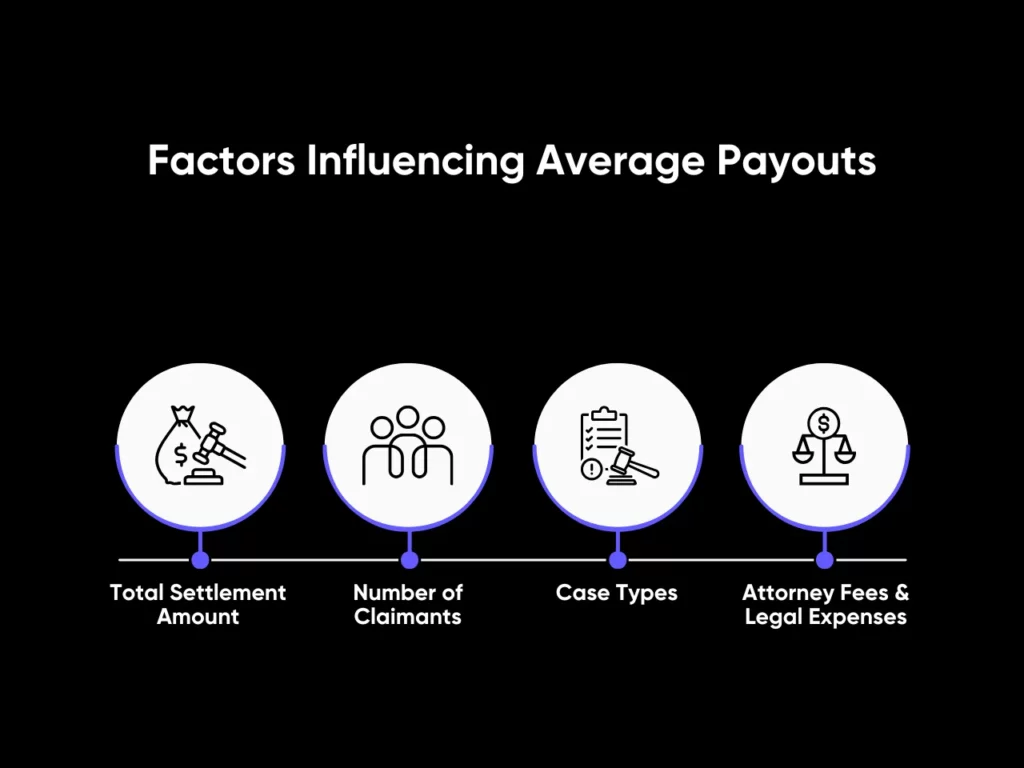
Total Settlement Amount
The size of the settlement fund is a major factor in determining the average class action lawsuit payout per person. High-profile class actions can result in multimillion-dollar settlements. For instance, data privacy or product safety lawsuits might settle for hundreds of millions, while smaller cases often offer less significant funds.
For example, the Equifax data breach settlement reached around $575 million, with individual payouts estimated between $125 and $500 depending on the level of harm experienced. In contrast, more minor consumer protection cases may only have settlements in the low millions, significantly reducing the average class action lawsuit payout per person.
Number of Claimants
The more claimants there are in a class action, the smaller each individual’s payout will likely be. Significant cases, like those involving consumer data breaches, can have millions of claimants, sometimes reducing the average class action lawsuit payout per person to just a few dollars. Smaller groups, like employees affected by wage disputes, may receive a larger per-person share due to fewer claimants.
A famous example is the AT&T automated call settlement, where millions were eligible to claim around $45 each from a $45 million settlement. For cases with fewer members—such as employment lawsuits involving a specific department—individuals could see larger payouts per person.
Case Types
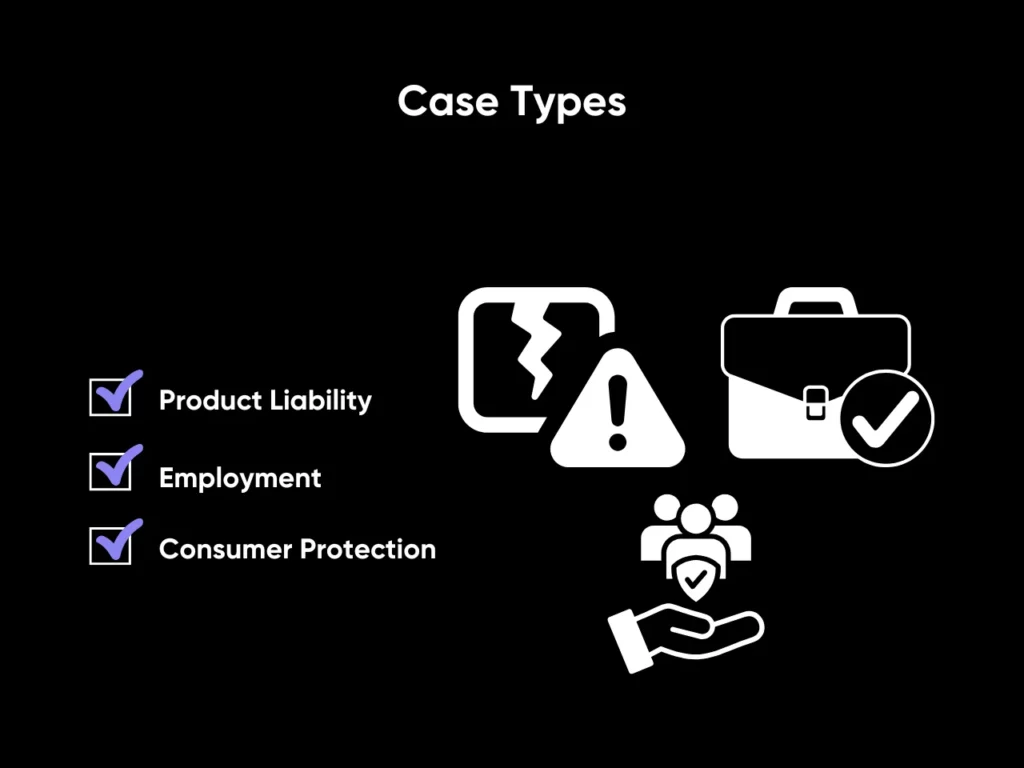
The type of lawsuit plays a significant role in payout size. Generally, cases involving physical harm, such as product liability, will result in higher individual payouts than cases concerning minor financial losses.
- Product Liability: These cases often yield higher payouts due to the risk of severe injury, with amounts reaching thousands per person.
- Employment: Payouts in labor cases, such as those for unpaid wages, tend to be in the lower range, often under $1,000 per claimant.
- Consumer Protection: These cases usually involve misleading advertising or minor financial harm, yielding smaller payouts, often under $100 per person.
Class Action Attorney Fees and Legal Expenses
Attorney fees and administrative costs can significantly reduce the payout each class member receives. In most class actions, attorneys are paid through a contingency fee from the total settlement amount, often between 20-40%. For instance, a $10 million settlement fund may allocate $3 million for attorney fees and court costs, leaving only $7 million for claimants.
Common Types of Class Action Lawsuits and Average Payouts
Class action lawsuits span several key categories, each with specific standards, types of damages, and legal considerations. Understanding the dynamics of each category gives insight into why the average class action lawsuit payout per person varies and how the complexity of each type influences the compensation awarded.
Product Liability Cases
Product liability lawsuits are among the most common types of class actions. They focus on the harm caused by defective or unsafe products and often result in significant financial compensation for claimants due to the potentially severe consequences.
Why are Payouts Often Higher in Product Liability Cases?
In product liability cases, punitive damages can be substantial because they aim to address real and severe consequences for individuals, including:
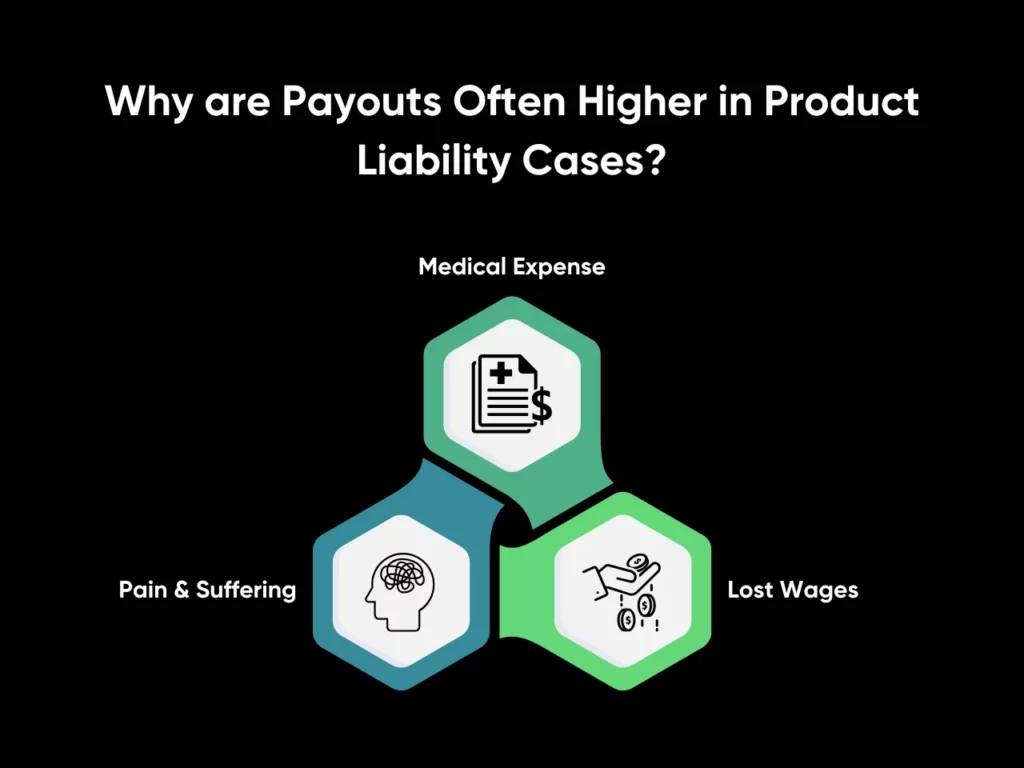
- Medical Expenses: Covering the costs for treating injuries caused by the product, such as hospital bills and rehabilitation.
- Lost Wages: Compensating for the time missed from work due to injuries or treatment.
- Pain and Suffering: Addressing the physical and emotional distress caused by the injuries.
For example, the Roundup weed killer lawsuit is a well-known product liability case where individuals developed cancer after prolonged use. Bayer, Roundup’s manufacturer, settled these cases with payouts ranging from several thousand to hundreds of thousands per person, depending on the severity of each claimant’s injuries. This case set a precedent for the high stakes of product liability lawsuits when a product directly impacts users’ health.
Case Complexity and Individualized Payouts
Product liability lawsuits can be complex because each claimant’s level of harm varies. Courts often assess each claimant’s circumstances individually, resulting in a wide payout range even within the same case. This individualized approach is why payouts can range from hundreds to thousands of dollars per person in product liability lawsuits.
Employment Disputes
Employment disputes are another common type of class action suit. They center on issues in the workplace, such as unpaid wages, workplace discrimination, or failure to adhere to labor laws.
Why Are Payouts Lower in Employment Disputes?
While employment cases may have substantial potential settlement amounts, the class action lawsuit average payout per person tends to be lower due to the large number of claimants and the nature of the damages. Here’s why:
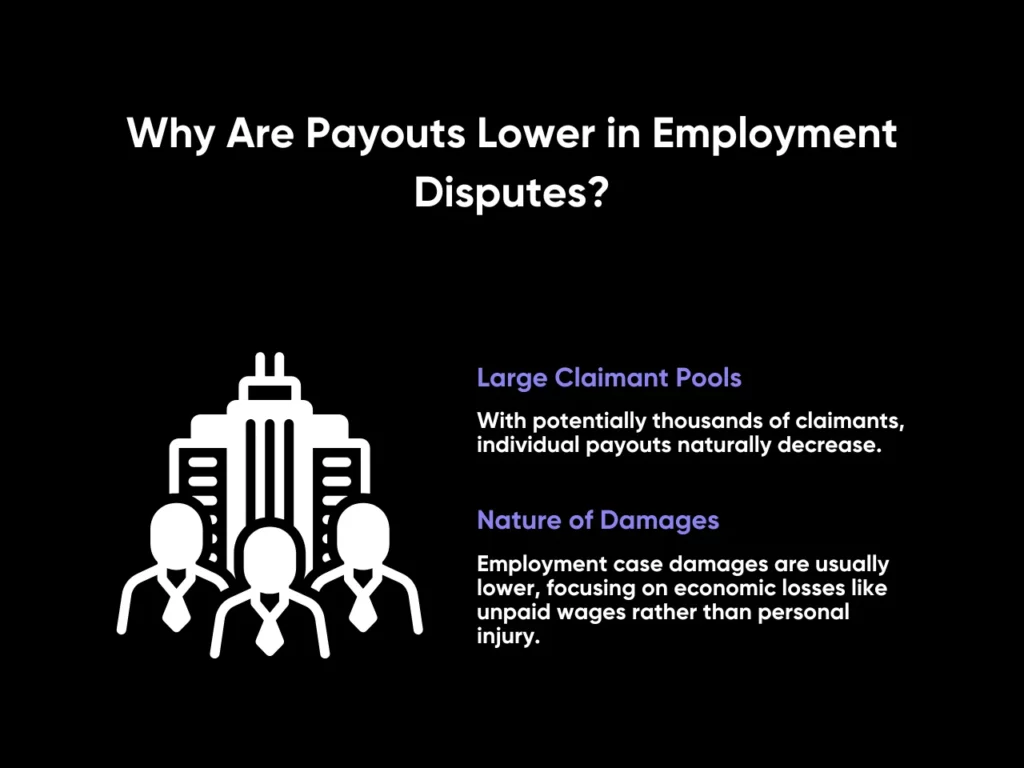
- Large Claimant Pools: Employment disputes often cover entire departments, locations, or even all employees within a company. With potentially thousands of claimants, individual payouts naturally decrease.
- Nature of Damages: Damages in employment cases usually involve economic losses like unpaid wages or overtime rather than personal injury. This means payouts are generally lower than in cases involving physical harm.
For example, the Walmart wage dispute settlement addressed unpaid overtime for thousands of employees. The individual payouts varied but typically ranged from $100 to $1,000 per person, primarily because it covered a large group of employees with straightforward wage-based damages.
Complexity and Individual Roles in Employment Cases
In some employment disputes, specific employees may serve as lead plaintiffs, taking a more active role in the case, such as providing testimony or evidence. These individuals might receive slightly higher payouts to recognize their additional effort, but overall, employment cases are structured to provide fair, proportional compensation to a broad group of employees.
Consumer Protection Cases
Consumer protection lawsuits cover a broad range of issues, from misleading advertising to hidden fees or product misrepresentation. These cases generally involve large groups of consumers, leading to a smaller average class action lawsuit payout per person.
Why Do Consumer Protection Cases Usually Yield Smaller Payouts?
Consumer protection cases typically have lower per-person payouts due to a few factors:
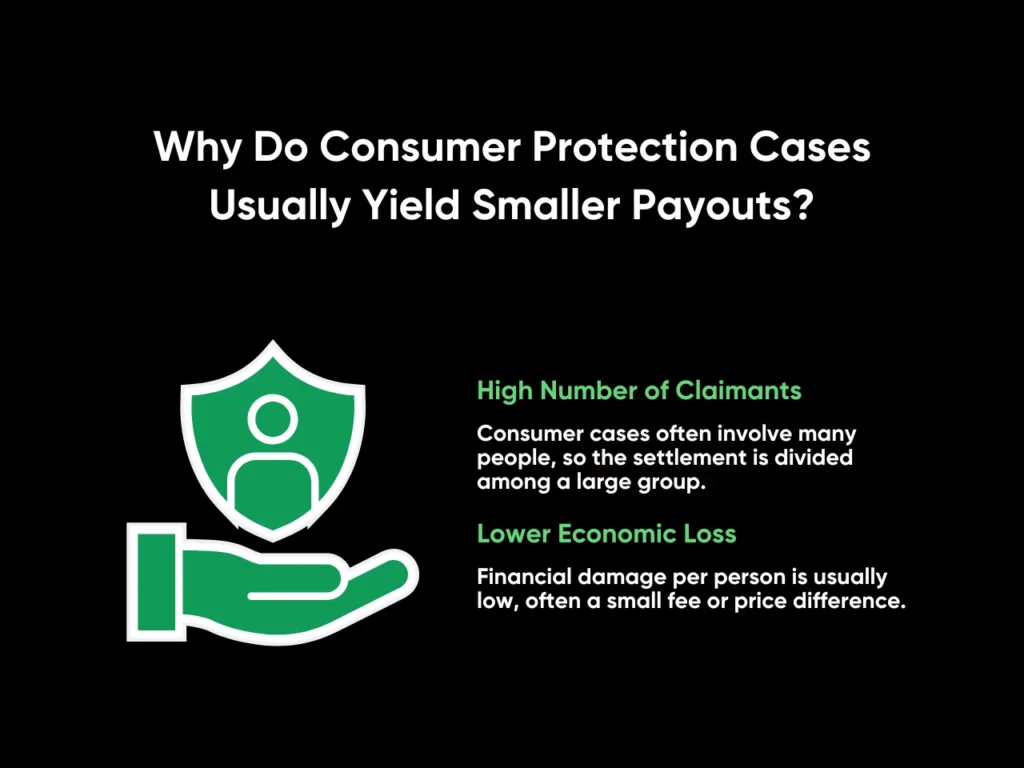
- High Number of Claimants: Consumer cases often involve thousands or even millions of consumers, meaning the total settlement fund is divided among a large group.
- Lower Economic Loss: In most consumer cases, the financial damage per person is relatively low, often amounting to a small fee or price difference.
For example, the Ticketmaster class action settlement addressed unauthorized fees consumers paid on ticket purchases. Because millions of consumers were affected, payouts per person were often only enough to cover a minor fee or ticket discount, frequently under $100.
Nature of Damages and Mass Distribution
Unlike product liability cases, consumer protection cases don’t typically involve physical harm. Instead, they focus on economic losses, which may not impact individual consumers’ financial well-being as significantly. This means courts generally issue lower payouts to reflect the nature of the damages.
Another consideration is that, in some consumer protection cases, part of the settlement may include “in-kind compensation” instead of cash payouts. For example, a claimant might receive store credit or discounts on future purchases, as seen in some consumer protection settlements, where the goal is to directly address the impact of the misrepresented product or service.
Understanding the Claims Process and its Impact on Payout
How is settlement money divided? The class action claims settlement process is essential for eligible claimants to secure their share of a settlement. Each step in the legal process influences how and when claimants receive payouts and impacts the final amount distributed per person. Here’s a detailed look:
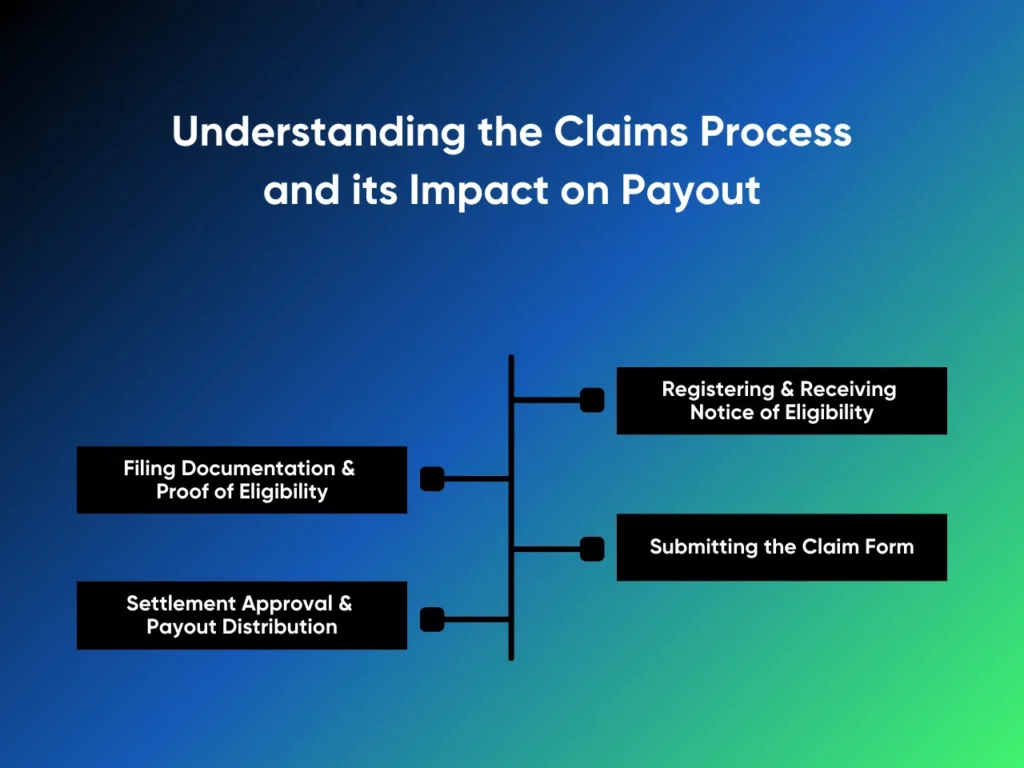
Registering and Receiving Notice of Eligibility
Once a class action is certified by the court, eligible claimants receive a notice informing them of the lawsuit. The claims administrator, a neutral third party, often manages the notification process, which may include mailed letters, emails, or public notices in newspapers and online. This notice will explain the case, the settlement terms, and important deadlines.
Filing Documentation and Proof of Eligibility
Many class actions require claimants to provide proof to establish eligibility. This might include proof of purchase, such as receipts, credit card records, or other documentation that shows involvement or harm from the defendant’s actions. For instance, a product liability case involving health risks may require medical records to validate economic damages.
When documentation is required, claimants with insufficient proof may face reduced payouts or exclusion from the settlement entirely. Some substantial settlements categorize claimants into different “tiers” based on the level of harm or evidence provided, resulting in varied payouts within the same class action.
Submitting the Claim Form
To officially join the class action and receive compensation, claimants must submit a claim form by a strict deadline. Many administrators offer online submission for convenience, though mail-in options are often available. Missing this deadline typically results in forfeiture of the claimant’s share, which highlights the importance of timely filing.
Settlement Approval and Payout Distribution
After claims are submitted, the court oversees the settlement distribution, which may take months or even years to complete, especially if there are appeals or further administrative requirements. The claims administrator plays a crucial role in validating each claim and allocating funds appropriately.
In a number of cases, unclaimed funds—those left by individuals who miss deadlines or fail to meet documentation requirements—are redistributed among valid claimants. This redistribution can slightly increase individual payouts. Alternatively, court proceedings may direct unclaimed funds to a cy pres recipient, typically a charity related to the case.
Key Takeaway
What is the average class action lawsuit payout per person? Well, don’t quit your day job just yet. While some cases—think major health scares or product defects—deliver substantial payouts, others involving minor consumer gripes might only fund a quick coffee run. The final amount each claimant receives depends on the nature of the case, the total settlement, and the number of people waiting for their piece of the pie.
But there’s a twist. Legal fees, proof requirements, and mountains of paperwork can shrink those payouts faster than you’d expect. If you’re gearing up for a class action, be ready for the process to demand patience—and sometimes, a bit of luck.
Want the full scoop on class action settlements? Sparrow’s blogs dive deep into topics like how to file a class action lawsuit, why settlements take so long, and more, making sure you’re in the know. Visit our blog to stay updated, or reach out directly for guidance on maximizing your settlement claim.

